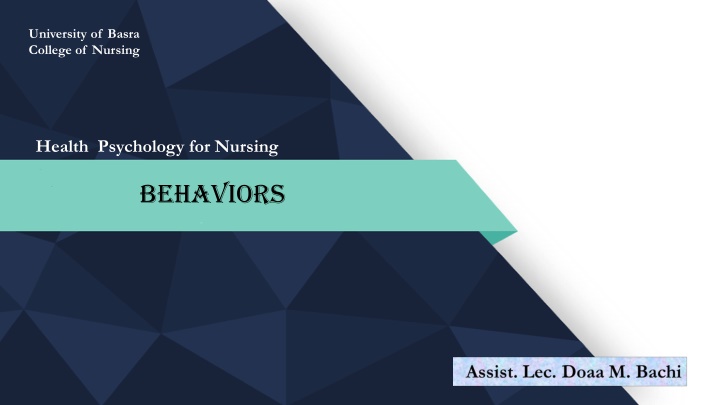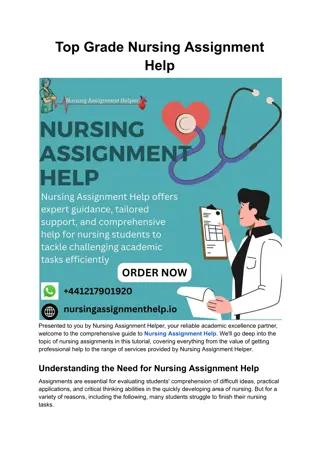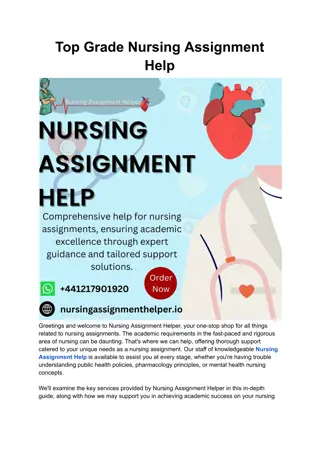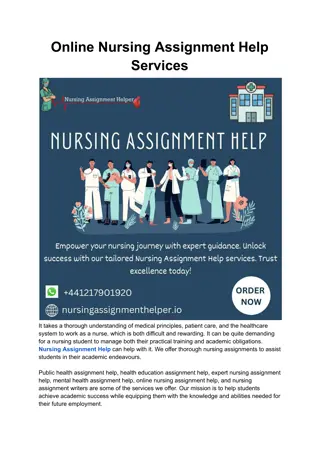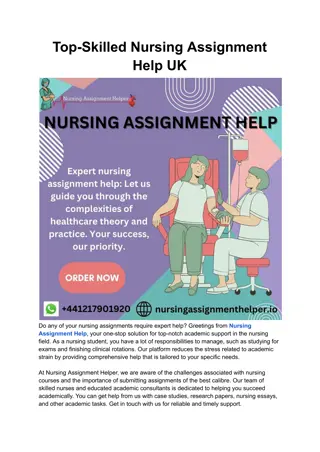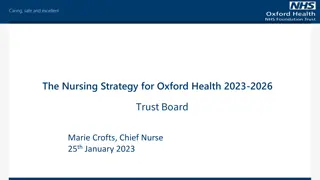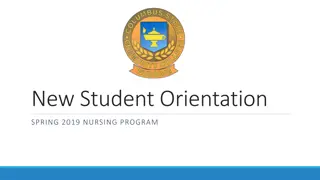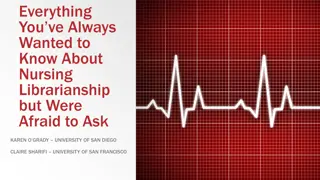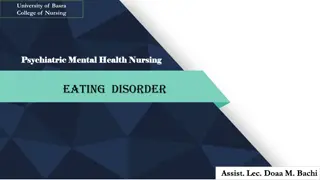Basra Nursing College: Understanding Health Behaviors
Behavior is the act and way we act, varying in consciousness, overt/covert, voluntary/involuntary. Healthy behavior aims to prevent disease through actions like good nutrition and smoking reduction. Culture, attitudes, and genetics shape human behavior, influenced by lifestyle, customs, and traditions.
Download Presentation

Please find below an Image/Link to download the presentation.
The content on the website is provided AS IS for your information and personal use only. It may not be sold, licensed, or shared on other websites without obtaining consent from the author.If you encounter any issues during the download, it is possible that the publisher has removed the file from their server.
You are allowed to download the files provided on this website for personal or commercial use, subject to the condition that they are used lawfully. All files are the property of their respective owners.
The content on the website is provided AS IS for your information and personal use only. It may not be sold, licensed, or shared on other websites without obtaining consent from the author.
E N D
Presentation Transcript
University of Basra College of Nursing Health Psychology for Nursing Behaviors
WHAT IS BEHAVIOR? Behavior- is an action that has specific frequency, duration, and purpose, whether conscious or unconscious, it is both the act and the way we act. Action drinking/smoking to say a person has drinking/smoking behavior Duration is it for a week/month? Frequency- how it is repeated? Purpose is he/she doing consciously or not
CHARACTERISTIC OF BEHAVIOR 1. Conscious or unconscious. 2. Overt or covert. 3. Voluntary or involuntary.
Healthy behavior-is an action that healthy people undertake to keep themselves or others healthy and prevent disease. Healthy behavior aimed to prevent disease. Health behavior is any activity undertaken by a person believing him/herself to be healthy for the purpose of preventing disease or detecting it at an early stage Good nutrition Breast feeding Reduction of health damaging behaviors like smoking Human behavior is influenced by culture, attitudes, emotions, values, ethics, authority, rapport(relationship), persuasion(influence), coercion and/or genetics
Life style, Customs and Traditions are different words of the same thing. Life style: refers to the collection of behaviors that make up a person s way of life-including diet, clothing, family life, housing and work. Customs: It represents the group behavior. It is the pattern of action shared by some or all members of the society. Traditions: are behaviors that have been carried out for a long time and handed down from parents to children
TYPES OF HEALTH BEHAVIOR Health-Directed Behavior: Observable acts that are undertaken with a specific health 1. outcome in mind Health-Related Behavior: Those actions that a person does that may have health 2. implications, but are not undertaken with a specific health objective in mind. Preventive Health Behavior action taken when a person wants to avoid being ill or 3. having a problem e.g. a mother takes her child for immunization.
Illness Behavior action taken when a person recognizes signs or symptoms that suggest 4. a pending illness e.g. a mother gives her child cough medicine after hearing her wheeze Sick-Role Behavior action taken once an individual has been diagnosed (either self or 5. medical diagnosis) e.g. an employee takes a vacation because he is ill, he takes treatment and obeys his doctor s advice. Utilization behavior: - utilization of health services such as antenatal care, child health, 6. immunization, family planning etc Compliance behaviors: - following a course of prescribed drugs such as for tuberculosis. 7. Rehabilitation behaviors: - what people need to do after a serious illness to prevent 8. further disability. Community action: - actions by individuals and groups to change and improve their 9. surroundings to meet special needs.
FACTORS THAT AFFECTING HUMAN BEHAVIOR 1. Predisposing factors: provide the rationale or motivation for the behavior to occur. Some of these are: Knowledge Belief Attitudes Values Example Knowledge: is knowing things, objects, events, persons, situations and everything in the universe. It is the collection and storage of information or experience. It often comes from experience. We also gain knowledge through information provided by teachers, parents, friends, books, newspapers, etc E.g. knowledge about methods of prevention of HIV
Belief: is a conviction that a phenomenon or object is true or real. People usually do not know whether what they believe is true or false. They are usually derived from our parents, grandparents, and other people we respect. Beliefs may be helpful, harmful or neutral. If it is not certain that a belief is harmful, it is better to leave it alone. For example, a certain society may have the following beliefs: (Holding materials made of iron by mothers during postpartum (Neutral). Diarrhea may end up with death (helpful) Measles cannot be prevented by immunization (harmful))
Attitudes: the way you think and feel about someone or something a feeling or way of thinking that affects a person's behavior. Example Almaz had fever and visited the nearby health center. The staff on duty that day was very busy and shouted at her, Do you want us to waste our time for a mild fever? Come back when we are less busy. She did not like being shouted at. This experience gave her bad attitude toward the health staff. This bad attitude could discourage her from attending the health center next time she is sick. Values: are broad ideas and widely held assumptions regarding what are desirable, correct and good that most members of a society share. Example being married and having many children are highly valued in most Ethiopian community. Norms: are social rules that specify appropriate and inappropriate behavior in given situations.
2. Enabling factors: these are characteristics of the environment that facilitates healthy behavior and any skill or resource required to attain the behavior. Enabling factors are required for motivation to be realized. Examples of enabling factors include: Availability and or accessibility of health resources Government laws, priority and commitment to health Presence of health related skills E.g. Enabling factors for a mother to give oral rehydration solution to her child with diarrhea would be: (Time, container, salt, sugar and Knowledge on how to prepare and administer it)
3. Reinforcing factors: Reinforcing factors: these factors subsequent to the behavior They are important for persistence or repetition of the behavior. The most important reinforcing factors for a behavior to occur or avoid include: Family Peers, teachers Employers, health providers Community leaders Decision makers
WHAT IS PREVENTION? Prevention: is defined as the planning for and the measures taken to forestall the onset of a disease or other health problem before the occurrence of undesirable health events. There are three distinct levels of prevention: primary, secondary, tertiary prevention
First: Primary prevention is comprised of those activities carried out to keep people healthy and prevent them from getting disease. Examples of important behaviors for primary prevention includes using rubber gloves when there is a potential for the spread of disease, immunizing against specific diseases, exercise, and brushing teeth
Second: Secondary prevention: includes preventive measures that lead to an early diagnosis and prompt treatment of a problem before it becomes serious. It is important to ensure that the community can recognize early signs of disease and go for treatment before the disease become serious. Health problems like tuberculosis can be cured if the diseases are detected at an early stage. The actions people take before consulting a health worker, including recognition of symptoms, taking home remedies ( self-medication ), consulting family and healers are called illness behaviors. Illness behaviors are important examples of behaviors for secondary prevention
Third: Tertiary prevention: seeks to limit disability or complication arising from an irreversible condition. Even at this stage actions and behaviors of the patient are essential. For example, a diabetic patient should take strictly his/her daily insulin injection to prevent complications.
